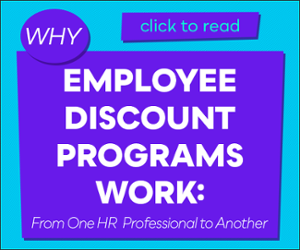Are you tired of hiring employees who just punch the clock and wait for the day to end? Do you wish your team could be more productive, innovative, and customer-centric? If so, it's probably well past time for your business to focus on employee engagement.
High employee engagement is essential for the overall motivation of your employees and your business’s success. Over time, the motivation and passion employees have for their jobs can help drive the success of your business forward and create a positive work environment.
Below, we will be discussing exactly why employee engagement is important and giving you some of our best employee engagement ideas to keep your workplace focused. By the end of this article, you will have a good sense of what employee engagement is and how to make it work for your organization.
What Is Employee Engagement and Why Is It Important?
Think of it this way: just like a car needs gas to run, your business needs engaged employees to succeed. Without it, you're running on fumes and can only go so far. But with engaged employees, you'll be cruising down the highway to success.
Here's why: Engaged employees are 17% more productive than their disengaged counterparts, according to a Gallup study. And that's just the beginning. Companies with engaged employees experience a 21% increase in profitability, have customer satisfaction ratings that are 12% higher, and have 70% fewer safety incidents, among other benefits.
But what exactly is employee engagement? It's more than just job satisfaction. It's about passion, commitment, and a sense of purpose. Engaged employees are fully invested in their work and feel valued by their employer. They are motivated to perform their best and take pride in their contributions.
Employee engagement is measured by a number of different factors and can be quite subjective depending on your organization and all of your employees. In general, engagement is measured by asking employees certain questions about their performance, feelings toward company goals, competency, and general satisfaction.
Employee Engagement Ideas
So how do you get there? It starts with creating a company culture that fosters employee engagement. This means offering flexible work arrangements, providing ample opportunities for personal development and growth, recognizing and rewarding employees for their hard work, and promoting a sense of community through team-building activities and workplace socialization.
And it's not just about the company culture, either. Effective onboarding, clear communication, and providing feedback are all crucial components of employee engagement. By prioritizing these elements, you'll be well on your way to creating a team of motivated, committed, and innovative employees.
See below for more of the details and extra ideas you can use to find what works best for you, your employees, and your business.
Start During Onboarding
According to Jenn Prevoznik, Global Head of Onboarding and Early Career Programs at SAP, " Effective onboarding is a critical component of employee engagement, retention and productivity. At SAP, we believe that a strong onboarding experience is the foundation of our employees’ success and long-term engagement with our company."
Positive first impressions are essential in creating engaged employees. From as early as your company’s onboarding experience, managers and supervisors should work to help new employees feel welcome, provide ample access to resources, introduce employees around the office, and communicate all shared goals and expectations as clearly as possible.
You may also want to develop activities for new employees to participate in, such as after-work happy hours or trivia nights, or assign each new employee a mentor in your business to help show them the ropes and get them accustomed to the company culture.
Here are some best practices for creating a successful onboarding experience for new employees:
- Develop a structured onboarding program that provides employees with a clear understanding of their role, responsibilities, and expectations. This should include a clear outline of training and support provided to them during their first few weeks and beyond.
- Pair new employees with a mentor or buddy. This will give them someone they can turn to for questions, guidance, and advice throughout their onboarding process.
- Plan activities that help new hires get to know their coworkers, such as team-building exercises and social events. These events will help to establish trust, build relationships and promote teamwork.
- Offer opportunities for continuous learning and development. Providing opportunities for growth, such as training sessions or workshops, can help employees feel valued and engaged with the company's mission and goals.
- Solicit feedback from new hires to identify areas of improvement in the onboarding process. This will help you optimize the onboarding process for future new hires and increase engagement levels.
- Set clear goals and expectations with new hires early on. Establishing goals early will help new employees understand their objectives and focus on achieving them.
- Follow-up regularly with new hires to address any questions or concerns they may have. This will help to ensure that new employees feel supported and valued throughout the onboarding process.
Improve the Working Environment
Employees can become worn-down by regular 9 to 5 jobs that feel the same day after day. You can take this opportunity to improve your employees’ engagement by allowing working flexibility, having meetings outdoors walking, or hosting midday meetings and chats at restaurants or coffee shops.
You can also promote employee wellness by offering health and wellness programs, ergonomic workstations, and access to healthy food options.
Support Financial Wellness in the Workplace
"When you're worried about money, it's hard to think about anything else – let alone do your job," says Andrew Graft, V.P. of corporate marketing at Access Perks.
Achieving financial wellness is an essential part of overall wellness, and it can have a significant impact on an employee's job performance and job satisfaction. Here are some ideas for employers to help employees achieve financial wellness:
- Offer employee discounts: Providing discounts on products and services, such as gym memberships, car rentals, and cell phone plans, can help employees save money and reduce financial stress.
- Offer financial education: Providing financial education to employees can help them make informed financial decisions, and it can reduce financial stress. Consider offering seminars, workshops, or classes on budgeting, saving, and investing.
- Offer a retirement plan: Offering a 401(k) or other retirement plan can help employees save for their future and feel more financially secure. Make sure to educate employees on the benefits of contributing to the plan, and consider matching a portion of their contributions.
- Offer financial counseling: Provide employees with access to financial counseling services, either through an outside provider or an internal program. This can help employees get personalized advice and guidance on their specific financial situations.
- Provide flexible work options: Offering flexible work options, such as telecommuting and flexible schedules, can help employees save money on commuting costs and child care expenses, which can improve their financial wellness.
- Review salaries and benefits: Regularly reviewing and updating salaries and benefits can help ensure that employees are being fairly compensated and can help reduce financial stress.
At Access Perks, one of our favorite ways to support financial wellness and reduce financial anxiety is through our nationwide employee discount program. By saving employees money on everyday expenses like food, clothing, travel and entertainment, we seek to maximize the purchasing power of every employee's paycheck.
Celebrate Employees
You should be taking every chance possible to celebrate your employees as people, and not only for their accomplishments. This can include recognizing birthdays, celebrating life events, and hosting gatherings. You may also want to throw going-away parties for employees that are retiring or leaving the company, as these actions will keep all of your employees engaged with the workplace and generally much more satisfied.
According to industry expert and employee experience advocate Josh Bersin, "Celebrating employee accomplishments is a powerful way to engage, motivate and retain your employees. People thrive on feeling valued, and recognition is a vital component of a healthy and positive workplace culture."
Encourage Assessments
To help your employees learn about their professional and personal strengths, you can offer strength assessments. These will allow you to engage with your employees and their unique skillsets, further maximizing their potential and passion for their job.
Involve Employees in Decision-Making
Every employee in your business has their own strengths and viewpoints. If you involve these employees in decision-making processes where applicable or ask them for advice, you can acknowledge these strengths. This will also allow you to show appreciation to your employees and demonstrate that you respect their opinion, something that can keep employees engaged in the long term.
Encourage Individuality
Make time to learn about your employees and their individual passions outside of work. You can ask about hobbies, what they spend their weekends doing, or their family lives in order to keep them engaged and encourage them to bring their authentic personalities to the workplace.
Engage Outside the Workplace
Creating opportunities for your employees to socialize outside of the workplace is a great way to increase employee engagement in the office. Outside team-building activities may lead to stronger communication skills, improved working relationships, and overall increased job satisfaction for all of your employees.
Examples of engagement outside the workplace include holiday parties for your employees, team lunches, and after-work activities.
Provide Flexible Working Hours
A cornerstone of employee engagement is providing flexible working hours. A work schedule that allows employees enough free time to spend with their family or on personal hobbies demonstrates that you respect their personal time and value their position in the company. You can also give occasional half-days on Fridays, allow an option for remote working in certain situations, or utilize schedules like the 9/80 work schedule to maximize flexible scheduling.
Additionally, make an attempt to ensure that your employees are not overworking or having their schedules be micromanaged. You should trust your employees to get their work completed on time and that they have the resources and support needed to meet any goal or milestone set out for them.
Support Volunteering
Supporting and encouraging your employees to volunteer can be another step in getting your employees to engage outside of work. This step is especially helpful if there is a particular cause your business focuses on. As your employees volunteer they will feel like they are making a difference, boosting their morale and happiness with the company.
Create a Safe Space for Feedback
Feedback, both given and received, in the workplace can be a touchy subject. It is important for employees to be able to provide their feedback when asked without feeling like they will face consequences for their opinions. They should also be able to receive feedback from management without feeling uncomfortable or that it is an attack on their personal work.
Build trusting relationships with your employees and encourage a company culture of openness. When giving or receiving feedback, be sure to keep an open mind, remain respectful, and gauge the comfort level of your employees each step along the way.
Recognize Your Employees
It is important to recognize employees in your company who have exceeded expectations or contributed significantly to your company. A good method is to ask how each employee wants to be recognized, as some will appreciate public recognition while others will appreciate a more private message or thank you card. You can make it part of your onboarding to ask how each employee prefers recognition and refer to it when an employee has made an impact in the workplace.
Design Socialization Spaces
In the office, there should be plenty of areas where employees are able to, and encouraged, to take a break and interact with each other. This could be a lunch room with multiple tables, a gaming area complete with cards, or a set of couches and access to snacks where employees can rest throughout the day.
These spaces will help employees stay relaxed and build stronger relationships with each other, leading to a boost in engagement and overall satisfaction.
Keeping Your Employees Involved
Employee engagement is essential in keeping your employees passionate about their jobs, happy with the company, and feeling their most valued. When implementing employee engagement activity and ideas into your business, be sure to take stock of how employees feel about the changes and be receptive to any feedback – this will create a safe space and start to develop an office culture of communication that is important in keeping your employees engaged and your business successful.
Employee Engagement: Totally Worth It
Improving employee engagement isn't just a nice thing to do - it's critical to the success of any organization.
And yet, employee engagement is more than just a program or a policy. It's a mindset that should be present throughout the entire organization. By investing in your employees and providing them with the support and resources they need to thrive, you'll see improved productivity, profitability, and customer satisfaction. And who doesn't want that?
What are your ideas for improving employee engagement at the place you work? We'd love to hear your thoughts. Be sure to share in the comments below!







